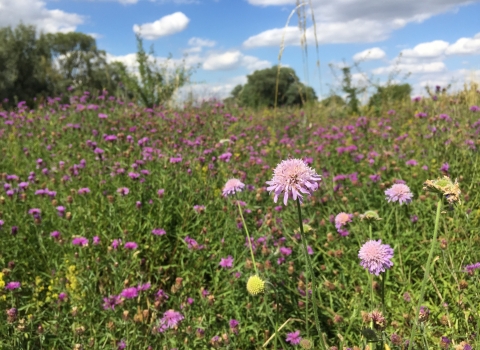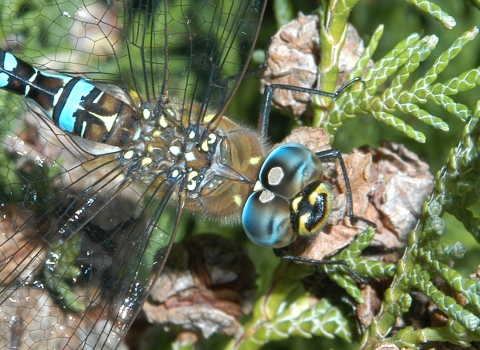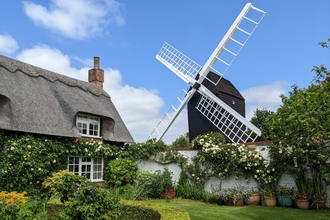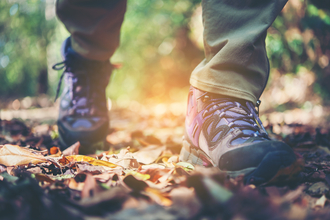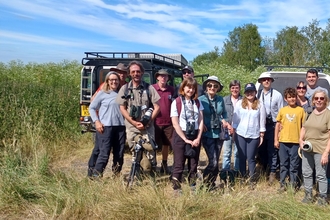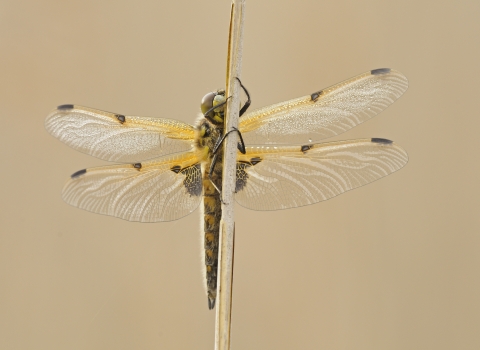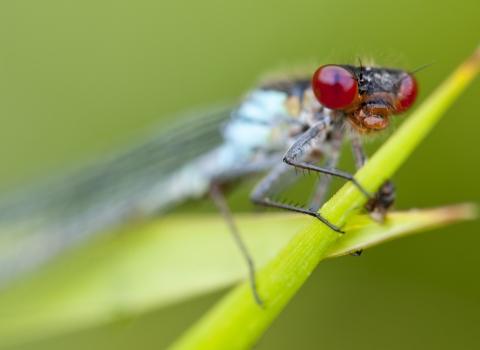Outside my office there is a new pond. It's not much to look at yet - the plants on the bank and in the water are taking their time to get established. But that doesn't seem to matter to the pond life. Five minutes spent looking at the water shows whirligig beetles darting around the surface, great diving beetle larvae hunting in the depths and water boatmen hanging to the sparse vegetation.
And then, best of all, a dragonfly! It lands for a second and I get a photo, which helps me identify it as a male broad bodied chaser. Shortly after a female appears and dips her abdomen in the water - laying eggs, which means next year we should have nymphs. Dragonfly larvae develop in the water for anything up to 5 years before emerging as colourful adults.
A short wander around Trumpington Meadows nature reserve on a sunny afternoon and it's not long before I see even more dragonflies - a black-tailed skimmer landing on the path as I walk, a stunning emperor dragonfly zipping past. Damselflies are also abundant - common blues, the size of a matchstick, and distinctive banded demoiselles.
Having a pond, even a small one, in your garden is one of the best things you can do for wildlife, and it won't take wildlife long to find it. But if you don't have one, you can still discover the wildlife that lives in or around water by visiting any nature reserve with a pond, lake or river. There are many to choose from, and this time of year is great for dragon spotting.
And if you're inspired to learn more, why not come along this Sunday to Trumpington Meadows for our Insect Day in celebration of National Insect Week, where you'll be able to explore all sorts of insect life making its home at this beautiful reserve in Cambridgeshire.




